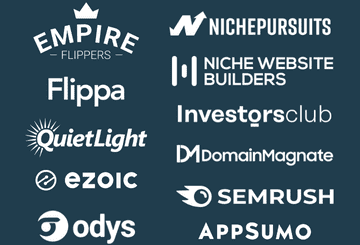Aged domain redirects are an advanced tactic to build up the authority of an existing content site. A good aged domain comes with existing backlinks that can be leveraged to expedite growth.
It’s crucial though to vet your aged domain in terms of topical relevancy to your existing site, quality of backlinks, and history of the domain. This write-up will assume you’ve vetted the domain already. You can read about how to vet an aged domain here.
In this write-up, I cover the following:
- Use-Cases for Aged Domains
- Major Benefits
- Redirect Strategies
- 2 Active Case Studies
- Common Questions
Let’s get to it!
BATTLE-TESTED RECOMMENDATIONS
If you want to learn my tactics in using aged domains to create highly-profitable niche content websites, then this 4+ hour course is what you need.
Digest a decade of experience in a single day with this jam-packed course. I cover how to find aged domains, due diligence, common red flags, teardowns of live domains, case studies of 6-figure sites, and much more more.
Primary Use-Cases for Redirecting an Aged Domain
As a website flipper, what are the use cases? Check out a few common ones below.
1. Redirect Aged Domain to an Acquired Site
A tactic to boost the niche site’s authority is to acquire an aged domain that has high-authority backlinks and perform a redirect to the acquired niche site.
A good strategy is to acquire a niche site under the $10,000 price range. These sites are relatively new (i.e., 1-2 years old) and do not have much authority. They usually earn less than $350 per month. Then, utilize an aged domain to boost the authority of this niche site.
2. Redirect Domain to a Starter Content Site
If you have a starter site that you’ve built from scratch or if you purchased a done-for-you starter site, redirecting an aged domain can be a good way to boost authority.
A starter site can take 12+ months to see any traffic and revenue if everything is done right. A redirect from a powerful domain can expedite growth.
3 Benefits of Redirecting an Aged Domain
Here are the major benefits of this tactic.
1. Pass Backlink Authority to Main Site: pass your aged domain’s link equity to the main site. Theoretically, this will help your main site’s authority thus leading to higher rankings.
2. Temporarily Delay Backlinking: the aged domain’s backlinks can be enough “link juice” required for a period of time.
3. Save on Outreach and Backlinks Costs: delaying backlinking leads to saving on outreach costs (i.e, hiring a virtual assistant) and the cost of paying for the backlinks.
3 Redirect Methods That I’ve Seen (and Tested)
There are many different ways to do redirects. The three covered below represent the barebones framework and they can be combined or altered to achieve the desired outcome.
I share the strategy, a visualization, and then the pros and cons.
1. Homepage Redirect: The Wildcard Approach
In this approach, the aged domain and all its pages are pointed directly to the home page. This is also known as a wildcard redirect.
This can be visualized as follows:
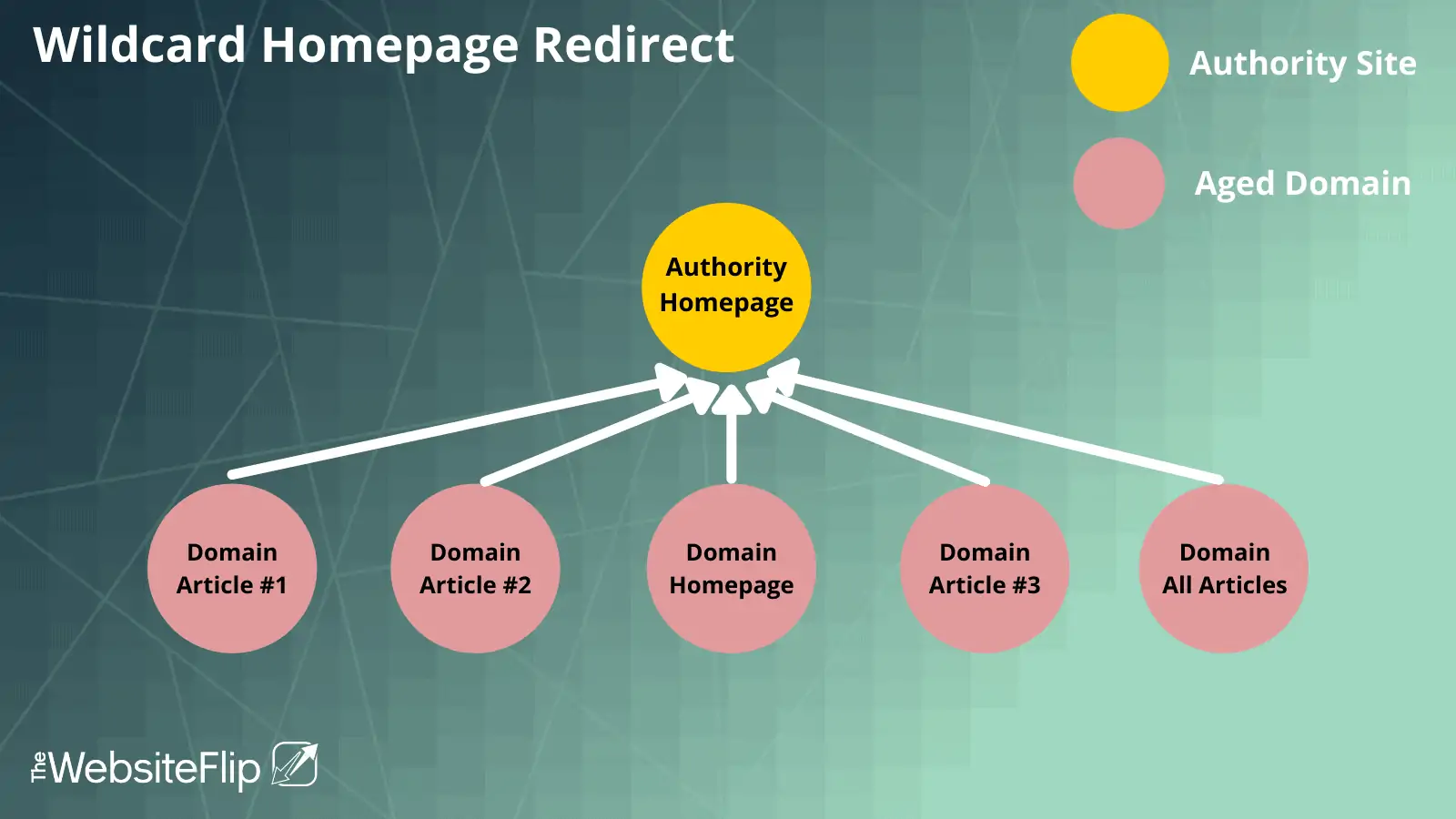
Pros
- Best bang for your buck: All link equity passes to the homepage of the main site
- Easy to set up via htaccess, Wordpress redirect plugin, or even at the registrar level
Cons
- Can be risky if topical relevancy is missing
- Can be seen as a red flag to boost up authority
2. Category Page Redirect: The Silo Approach
In this approach, relevant pages are redirected to a silo/category page on the main site. This can work if you have a dedicated silo page that is the same topic as the aged domain.
I also recommend placing a long-form article on the silo/category page and then interlink it out to different articles from that page.
This strategy can be visualized as follows:
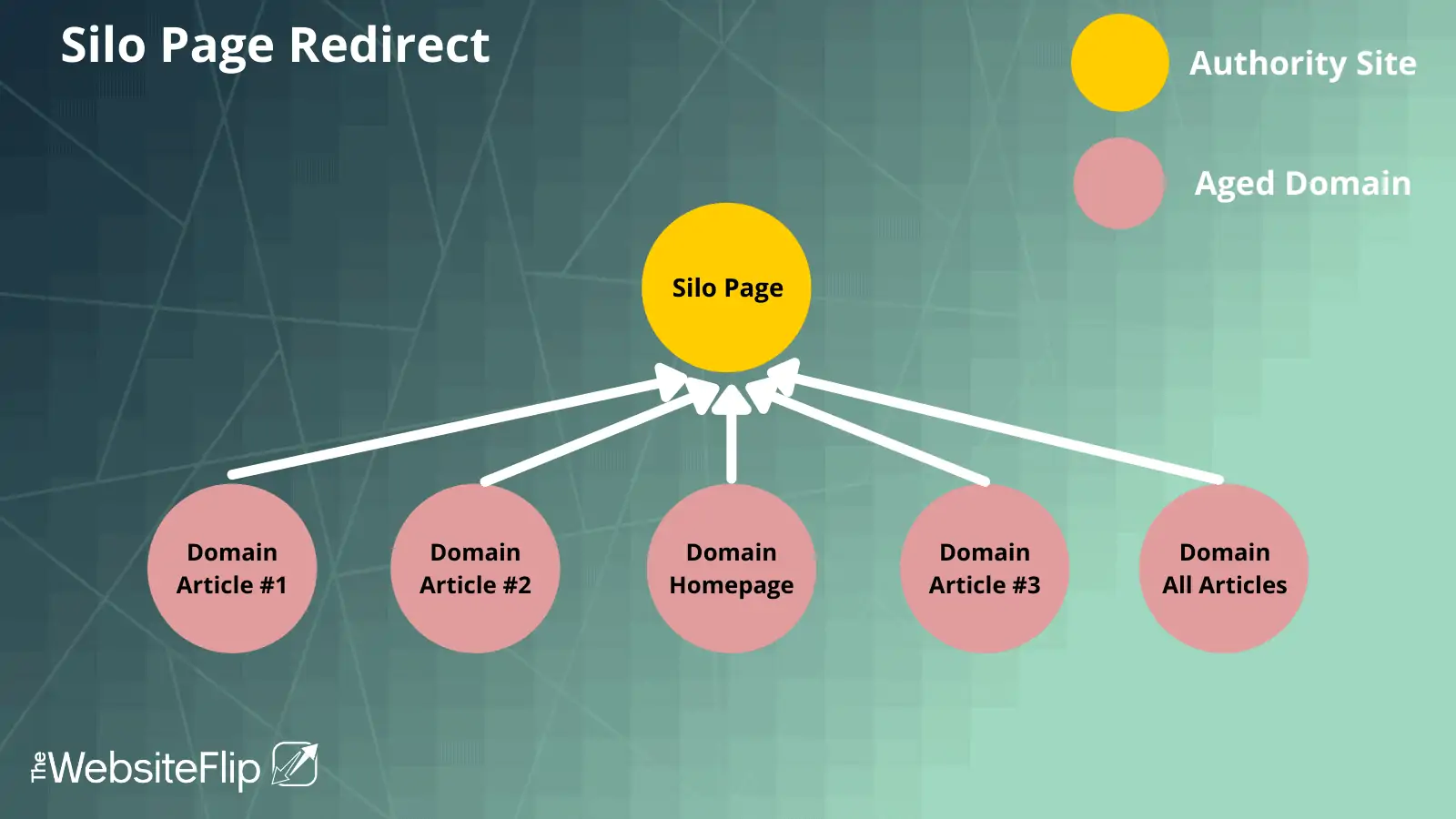
Pros
- Difficult to find aged domains that match in relevancy and backlinks with a silo page perfectly
Cons
- Link equity spreads from the silo page; less powerful
3. Merger Article Redirect: The M&A Approach
Mergers and acquisitions, or M&A, happen all the time in the real world. In essence, it’s when one company acquires another company. It’s common practice for the acquiring company to wrap up the purchased business, domain, customers, etc., and merge with their main website/business. They then publish a press release article letting the world know; it’s common practice.
From the perspective of a niche site owner that acquired an aged domain, the process is as follows:
- Write a dedicated press release article on the main site that answers questions: details about the two businesses, why merge, outlook, and then relevant links.
- Redirect the aged domain to the press release page on the main site
- Make sure to add relevant internal links on your press release page so the link juice passes through
This is what it looks like graphically:
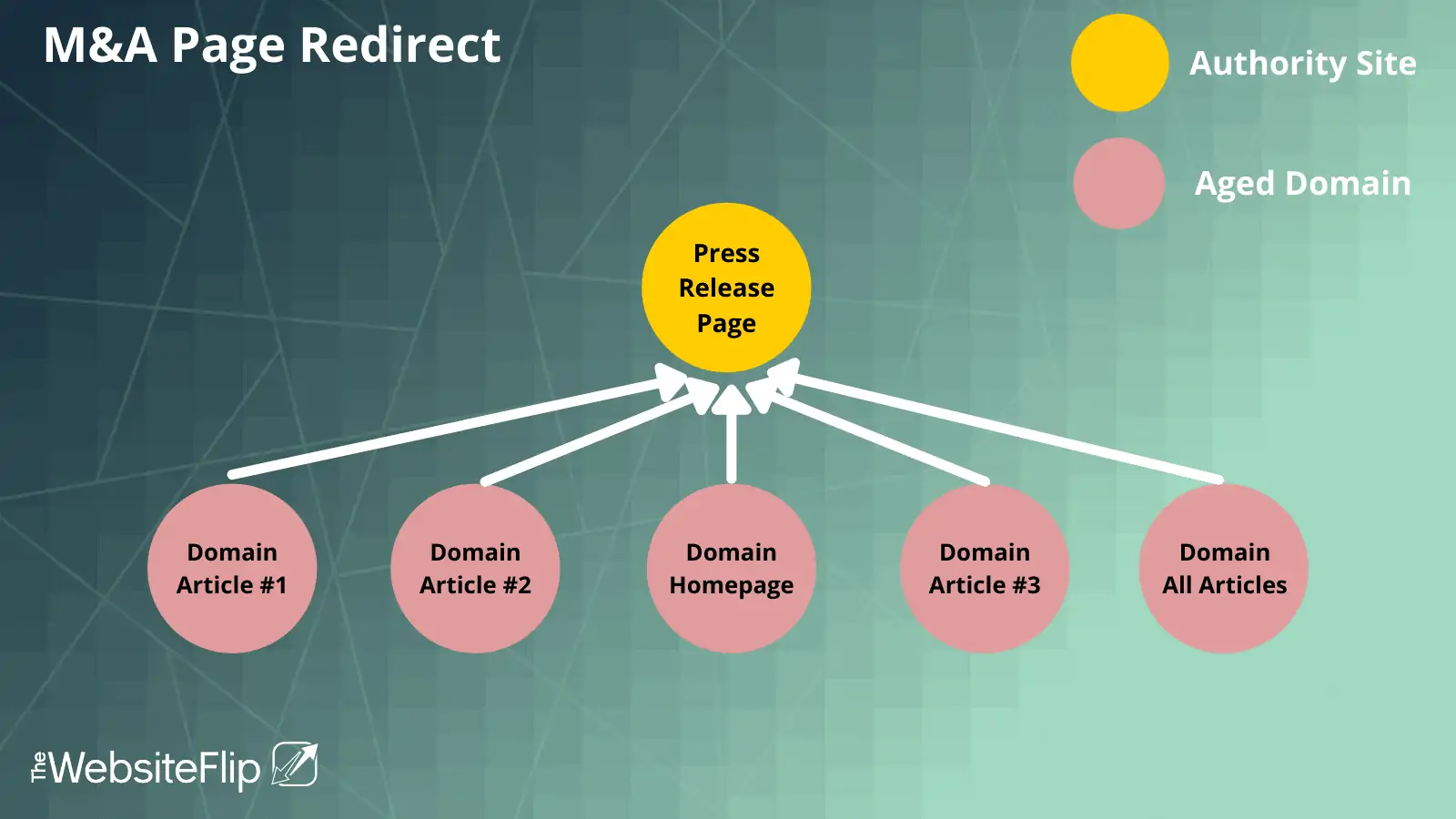
Pros
- More natural and mimics the real world
Cons
- Link equity is not as powerful since it’s going to a press release page (not the homepage, or silo page)
Variations of the 3 Strategies
The above strategies can be bundled together to achieve different variations.
For example, you can do an M&A page redirect partnered with a silo redirect. Visually, this is what it looks like:
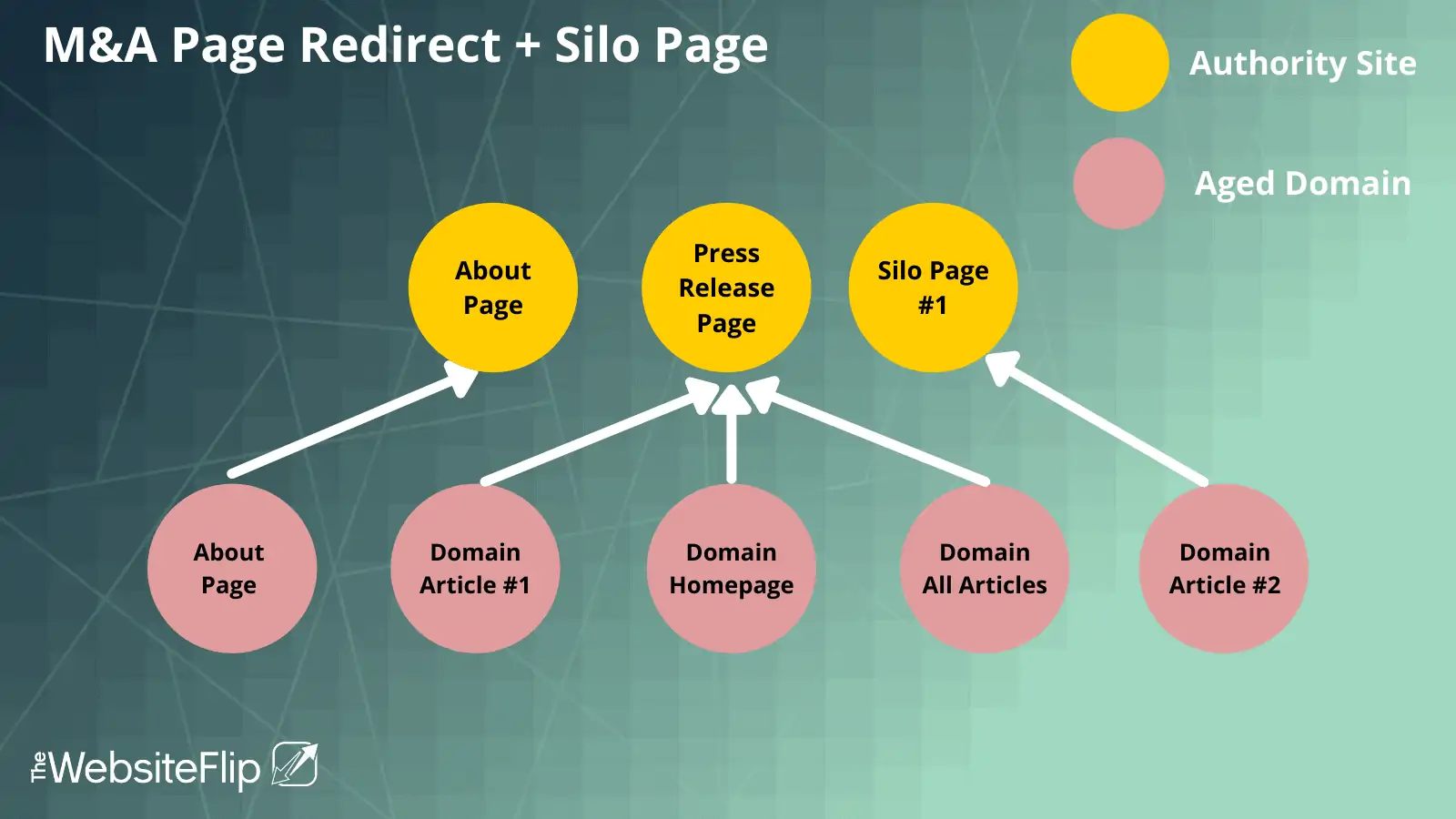
You could also do a homepage redirect and a silo page redirect together.
2 Domain Redirect Case Studies: My Processes
Case Study #1: Inventige.com Merged With TheWebsiteFlip.com
I have an aged domain redirecting to TheWebsiteFlip.com. This domain used to be my previous website for my brokerage and business services. The domain is Inventige.com which I’ve owned since 2015.
After moving my business over to TheWebsiteFlip.com, I needed to transfer the existing backlinks and authority from Inventige to TheWebsiteFlip. I utilized a combination of the M&A and silo redirect strategy.
Visually, at a high-level, this is what it looks like:
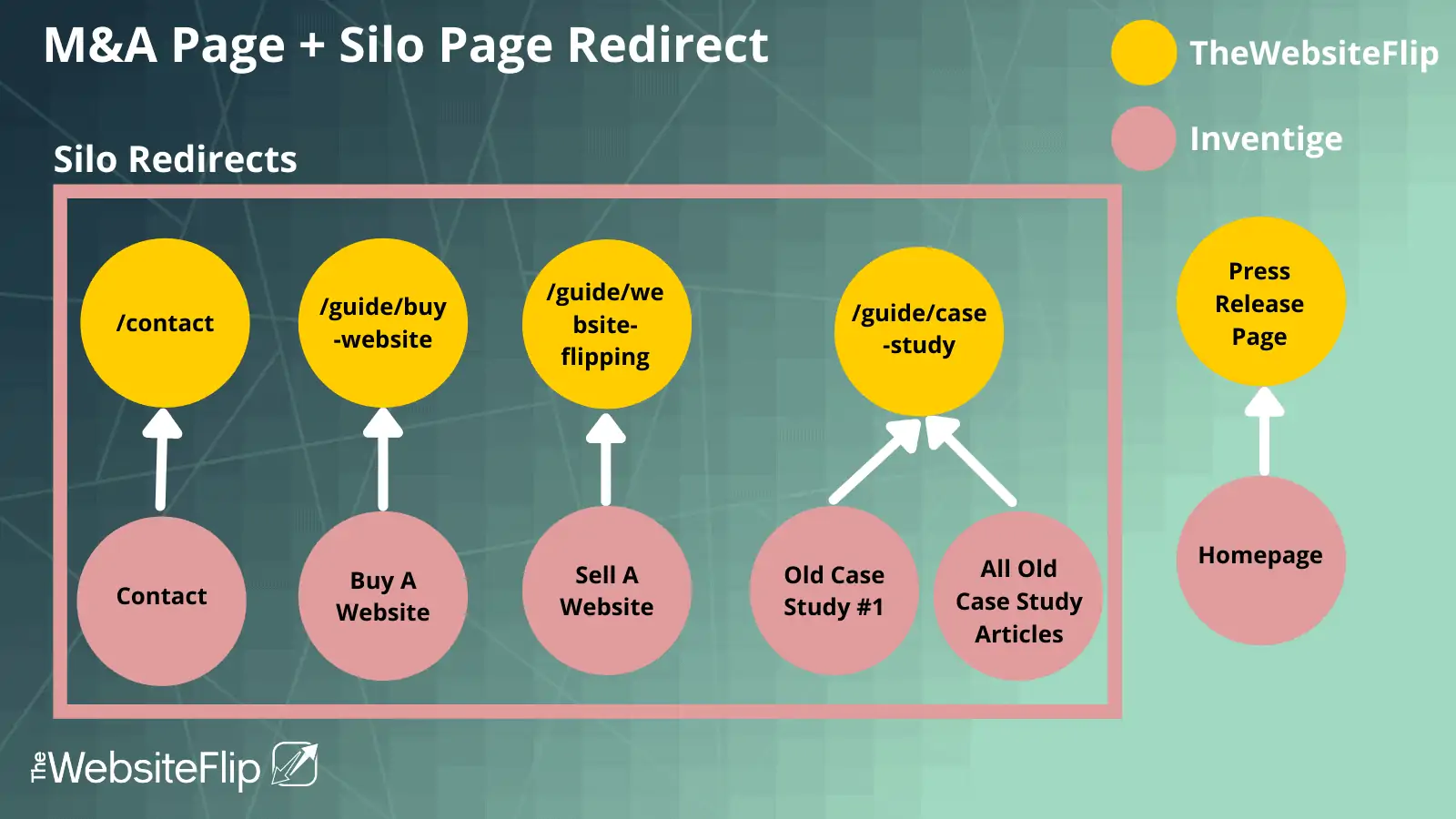
The press release page for the merger can be found here: https://thewebsiteflip.com/press-release-inventige-merge-thewebsiteflip/
After these redirects take place, AHREFs (or similar tools) can be used to check the redirects being picked up over time:
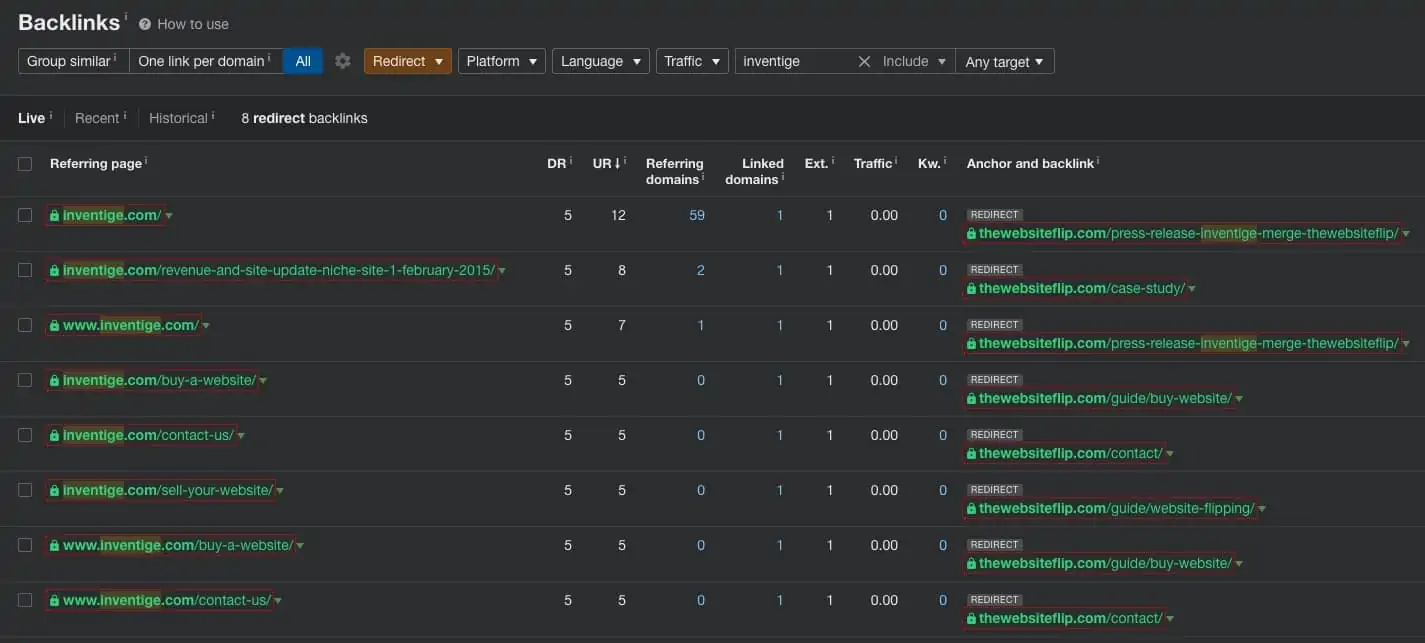
Here is an existing backlink I have from Empire Flippers that has been successfully redirected to the silo page on TheWebsiteFlip site:

With this strategy, all of the relevant link equity from my old domain has transferred to my new website.
Case Study #2: Silo Page Redirect to Niche Site
In late 2019, I acquired two domains in the renewable energy niche from the ODYS.global marketplace.
The main domain (DR 41) was used as the pillar on which I built the main content site. The secondary domain was niche relevant and redirected to a silo page on the main site.
Why did I use a silo page and not another method? The topical relevancy of the aged domain matched completely with the silo page on my main site. It was also a “shoulder niche” that I want to dominate over time. It made the most sense to pass all of the link authority to that silo page.
Visually, this is what it looks like:
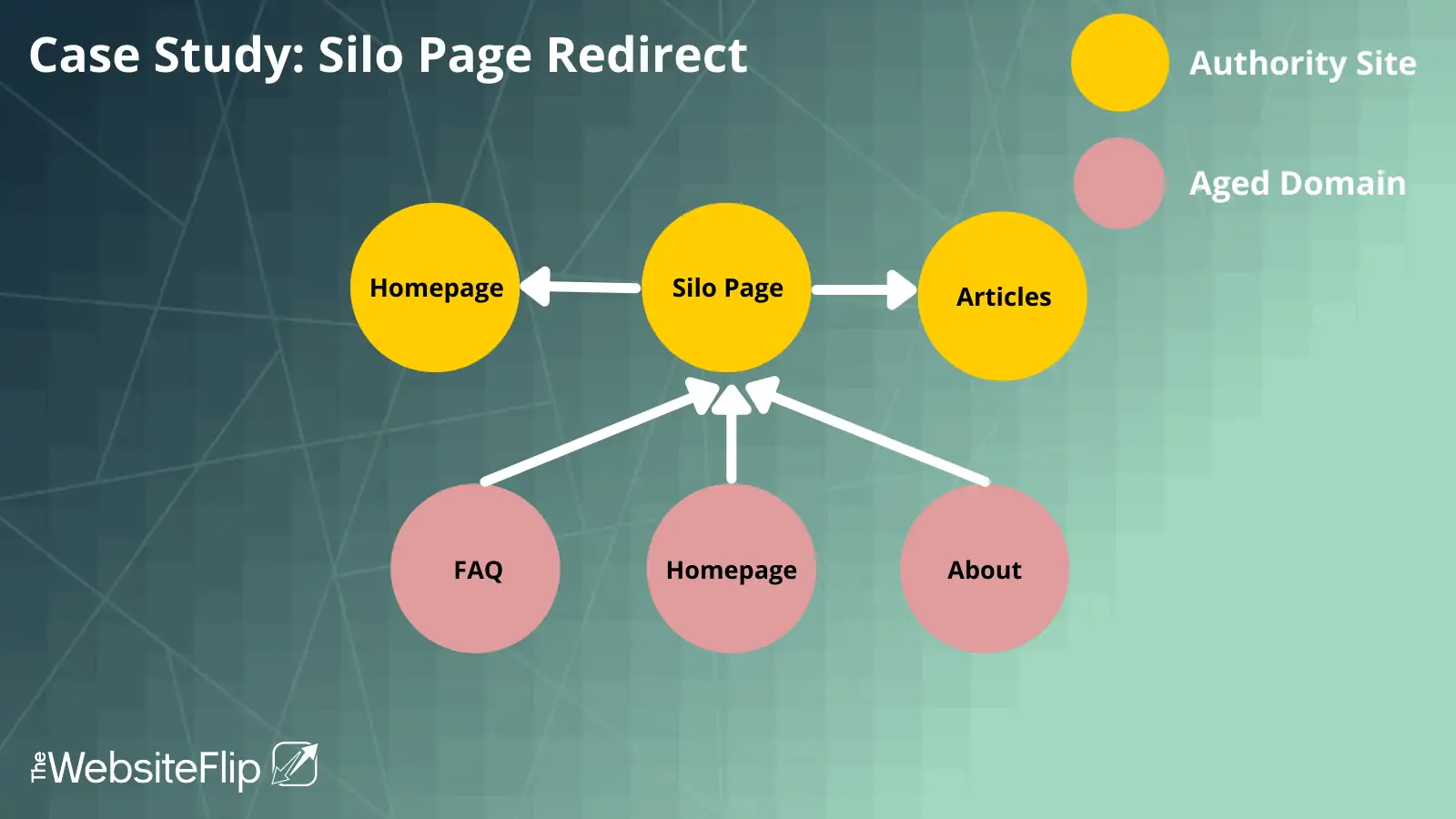
The two domains and redirects have been live since December 2019 and have experienced three Google algorithm updates.
The traffic on the site is growing slowly over time and has not been impacted by any of the updates:
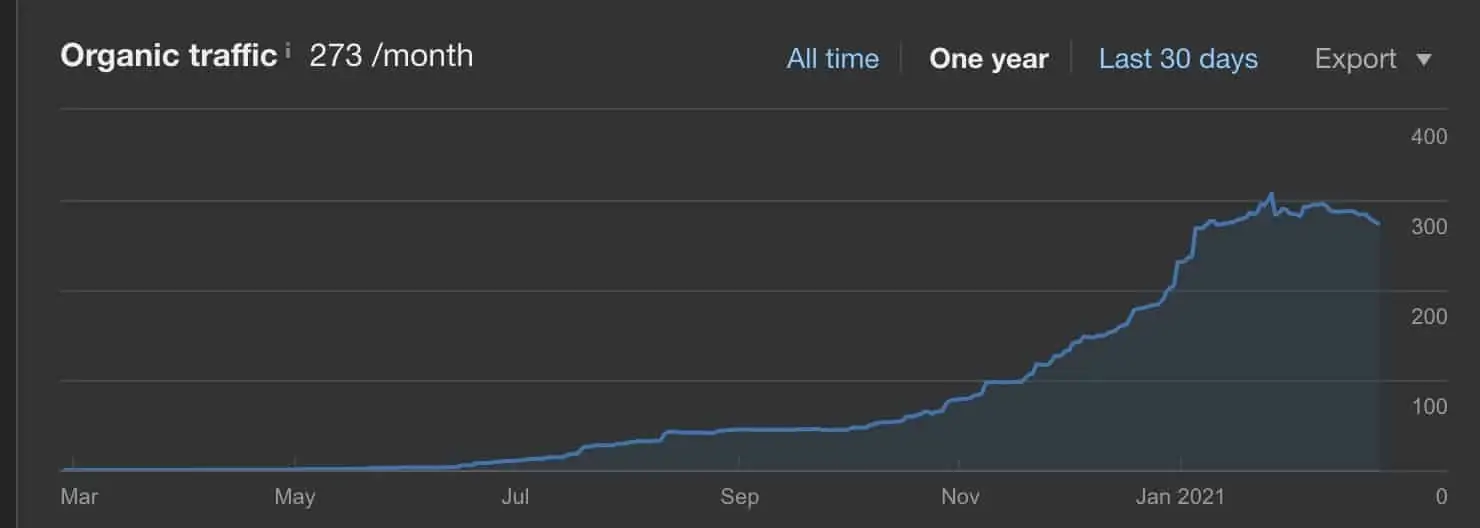
This project was an experiment to test whether redirects work, and which method works best. The site has done well in a tough niche and will receive more time commitment from TheWebsiteFlip team going forward.
7 Common Questions about Aged Domain Redirects
Where do I obtain aged domains?
A more in-depth look into aged domains can be found in this article.
I use ODYS.global to source all of my domains. They vet each domain for backlink quality, domain trademarks, branding, and indexability.
Other alternatives include using GoDaddy auctions, but you will have to participate with many other bidders. The benefit is that you may be able to buy for cheaper than marketplaces.
Should I ensure the aged domain is indexable?
Yes, this is recommended. After acquiring the domain, you can set up a simple Wordpress website and put up a landing page (e.g., a Wordpress homepage). Then, submit the sitemap into Google Search Console, and wait to verify if the site gets indexed by Google.
If it indexes, then this is a good sign that the site is not manually penalized and you can proceed with redirect strategies.
Note: a good aged domain service provider will already verify if the site is indexable. If you are buying directly from Godaddy auctions, you have no guarantees whether the site is indexable.
How can I set up redirects?
I set up Wordpress on my aged domains and then use redirect plugins. These are the plugins that I recommend:
301 Redirect – Easy Redirect Manager
Redirection
Rankmath
Note: There are plenty of free plugins to achieve 301 redirects. Do not pay for any of them.
How do I verify if the redirects are set up correctly?
You can use SEO tools like Ahrefs, SEMRush, etc. to check if they are picking up the 301 redirects. Here is a detailed tutorial on how to spot 301 redirects in AHREFs.
Using these tools you can see if the 301 redirects are showing up in the backlink reports. You can also see if the original backlinks have transferred over to the main site.
To verify if the redirect itself is technically setup, you can use tools like Redirect Checker.
How much do high-authority aged domains cost?
The cost of an aged domain can differ based on if you are buying at auction, or through a service provider. To get an idea, here is the cost of the domains that I’ve acquired in the past.
Via third-party service providers:
Energy niche (DR 41, 150 referring domains): $1,330
Energy niche (DR 34, 100 referring domains): $600
Wordpress niche (DR 57, 182 referring domains): $4,000
Via Godaddy Auctions:
Dating niche (DR 44, 871 referring domains): $3,900
The price of a domain can differ based on brandability, number of characters, number of referring domains, domain rating, among other factors.
Should I migrate a niche site to an aged domain?
This is a common question. What happens if you find a branded aged domain and want to move your niche site to it?
If your niche site is earning revenue and gaining traffic, I would keep it as-is. There is no need to risk a good asset.
If your site is new and not earning significant revenue, you can move the content over to the aged domain, perform a 301 redirect, and then initiate a Change of Address in Google Search Console.
Will using aged domains risk my main site?
No one has a definitive answer to this. Any out-of-the-box SEO strategy that differs from Google’s SEO guide has its risks. If you have a content site about technology and you redirect a random health domain to it, that’s a red flag. Make sure topical relevancy in content and backlinks is the same.
BATTLE-TESTED RECOMMENDATIONS
If you want to learn my tactics in using aged domains to create highly-profitable niche content websites, then this 4+ hour course is what you need.
Digest a decade of experience in a single day with this jam-packed course. I cover how to find aged domains, due diligence, common red flags, teardowns of live domains, case studies of 6-figure sites, and much more more.
Wrap Up: Will Aged Domains Be Part Of Your Strategy?
Aged domains can be an excellent way to build a high-revenue content site. For example, my dating site case study was an aged domain that was acquired for $4,000 and now has been earning an average of $9,000 per month over the last two years.
Aged domains have their place in an overall SEO strategy. You need to weigh the pros and cons against your appetite for risk.
Personally, aged domains are part of my arsenal of SEO strategies and I use them frequently.



